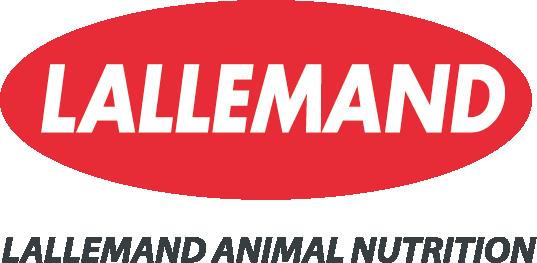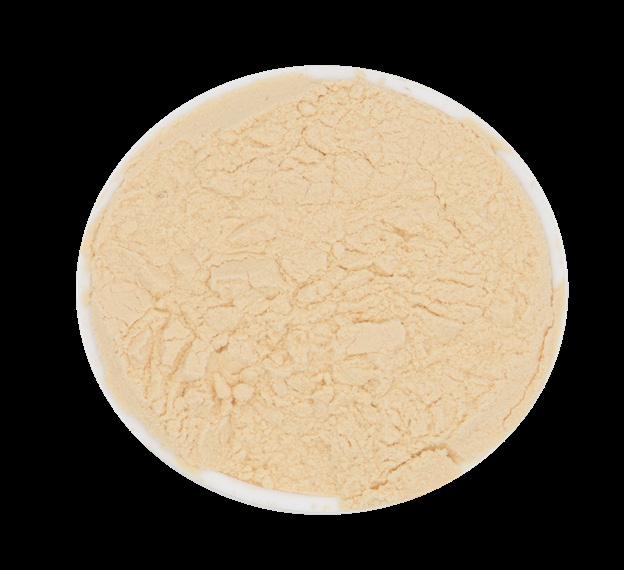How Much Selenium Does the Cow Need and above all, in what form?
By Mark McFarland, Feed Additive Product Manager, Lallemand Animal Nutrition UK & Ireland
Classic selenite, rumen-protected selenite or selenium yeast? What influence does the source of selenium have on the selenium status of dairy cows, dry cows and the transfer to youngstock?

Selenium is an essential trace element that is now rightly included as standard in almost every mineral feed. Selenium supplementation has become necessary, not only because soils, and consequently feedstuffs, have ever lower selenium levels, but also because the challenges faced by livestock are becoming ever greater.
Selenium plays an important role in various biological processes, e.g. for antioxidant defence against oxidative stress, normal thyroid function and optimal reproductive performance. But if selenium is already used as standard, why are we even talking about it? We now know that ‘not all selenium is the same’. The choice of selenium source (inorganic selenium or organic selenium) can have a considerable influence on the selenium status of adult animals, and the possible transfer to offspring via placenta and colostrum, particularly in ruminants, due to the influence of the rumen.
The rumen - a blessing and a curse?
There is no question that the rumen, with its complex microbiota, is a marvel of nature. It enables the digestion of fibrous plant material that is inedible for other animals, and us humans.
However, the rumen poses a real challenge for selenium supply. Classic inorganic selenite, which is very cheap to use, is chemically reduced in the rumen environment by the influence of microbes to a form that can no longer be absorbed by the animal in the small
intestine. This mechanism is not found in monogastric animals and is solely due to the rumen.
As a result, a large proportion of the selenite that is administered to ruminants via mineral feed is simply excreted again. This is directly reflected in the animals’ selenium status.
An independent study from Estonia1 showed that, according to KINCAID (1999)3, the selenium status of dairy cows that received only classical sodium selenite via the ration could be classified as marginally deficient (see Table 1 for selenium reference values for cows). This status does not automatically mean that diseases will occur due to a selenium deficiency, but the full potential of selenium, particularly with regard to antioxidant defences and its role in the immune system, is not being achieved.
What does this mean for ruminants? In order to fully exploit the important positive effects of selenium, the goal should be a beneficial supply in the upper range of the scale. A classic selenite source cannot guarantee this. So, what other options are there?
Selenized yeast and the rumen
Selenized yeast contains organic selenium, mainly in the form of selenomethionine and selenocysteine. These selenium components are found (albeit in very low levels) in plant protein. This means that it is a form of selenium that animals have always consumed and metabolised. Selenite (inorganic selenium), on the other hand, is found in the soil and not in plant material, which is why it is not a natural selenium source for animals.
The selenium compounds in selenized yeast remain intact in the rumen and are not reduced. This means that they are available for absorption in the small intestine. Some of the selenomethionine is
Plasma and serum analyses are the most suitable for assessing selenium status.

then stored in the muscle and in the case of lactating cows, also in the milk protein. The remainder is available to the animal as a source of selenium for the production of biologically important enzymes such as glutathione peroxidase or selenoprotein P.
The before-mentioned study from Estonia not only investigated the influence of inorganic selenite on the selenium status of dairy cows but also the effect of feeding an organic selenium source in the form of a high-quality selenium yeast (ALKOSEL, Lallemand Animal Nutrition).
The trial was carried out over a period of 121 days. Blood from 10 dairy cows (mid-lactation) was regularly examined and their selenium status determined. Before the start of the trial, the animals were given a standard combination of inorganic selenite and selenium yeast (each 0.2 mg Se/kg feed) via the mineral feed. On day one of the feeding trial, the previous proportion of selenium yeast was replaced by selenite (a total of 0.4 mg Se/kg). Over a period of 64 days, the change in selenium status in the blood was observed (Figure 1).
While the blood analysis showed a beneficial supply of selenium before the start of the trial, the animals were classified as marginally deficient after approximately 7 weeks. In this case, the selenium status decreased quite slowly because the previous supplementation of selenized yeast had created additional selenium storage in the body protein. Whole blood reacts relatively slowly to changes in selenium supply due to the stored selenium in the erythrocytes.
However, the plasma fraction in whole blood reacts more quickly and is primarily responsible for the drop in values. Erythrocytes have a lifespan of four months, which is why the complete influence of the
change in selenium source after 64 days cannot be fully assessed in this study.
After 9 weeks of selenite-only administration, organic selenium was reintroduced into the ration (0.2 mg Se/kg from selenized yeast in addition to 0.2 mg Se from selenite), and a renewed increase in blood selenium levels was measured. After just one week, the blood selenium levels of the dairy cows moved beyond the marginally deficient threshold, and then increased even more significantly over time. Here too, the increase largely corresponds to the increase coming from blood plasma.
And what about rumen-protected selenite?
For some years now, rumen-protected inorganic selenite has also been available for feeding. Here, the sodium selenite is protected by a coating so the reduction in the rumen no longer takes place to the same extent as with unprotected selenite.
In an independent study from Poland4, a research group looked at the influence of different selenium sources on the selenium status in the last trimester of pregnancy of Simmental cows, as well as on the transfer of selenium to their offspring. There was also a control group that did not receive additional selenium supplementation. The selenium sources tested were:
1. classical (unprotected) selenite, 2. rumen-protected selenite and 3. high-quality selenized yeast (ALKOSEL, Lallemand Animal Nutrition).
At the start of supplementation, the cows were already marginally
Table 2: Selenium concentration in blood serum of cows2
No added Se supplement Unprotected selenite Rumen-protected selenite Selenized yeast
Selenium concentration start of trial period
Selenium concentration immediately after calving
a, b, c = p ≤ 0.05
µg/lc
deficient, with a selenium concentration of 47 µg/l in the serum. The selenium status in the blood was determined again after three months of supplementation immediately after calving (Table 2).
It was found that the selenium deficiency increased by a further 9% in the animals fed no additional selenium supplementation. The cows that received unprotected selenite or rumen-protected selenite were still marginally deficient or just at the threshold of an adequate supply and no significant difference was found between the two groups, even though the selenium status in both groups was slightly higher than at the start of the trial. The literature5,6 describes an increased risk of placenta retention, metritis and ovarian cysts at serum concentrations below 50-60 µg/l. The cows that received selenized yeast managed to overcome the marginal deficiency threshold and were able to improve their selenium status by 57%, so that they could be classified as adequately supplied with a lower risk of corresponding post-calving reproductive diseases.
What effects did the different selenium sources have on the calves?
The selenium status of the calves was identical between the animals whose dams received no additional selenium supplementation or a classic, unprotected selenite supplementation (26 µg/l). Calves from cows that received rumen-protected selenite or selenium yeast had significantly higher blood selenium levels (36 µg/l and 40 µg/l).
The selenium status of the newborn calf is particularly important for muscular function in the few days after birth.
It was also shown that the selenium content in the colostrum was clearly dependent on the supplemented selenium source. Again, no difference could be seen between no supplementation and unprotected selenite administration (0.70 and 0.74 mg/day). The colostrum of cows receiving rumen-protected selenite was significantly higher compared to unprotected selenite (0.99 mg/day) but significantly lower than cows supplemented with selenized yeast (1.28 mg/day).
In summary, this study shows that unprotected, classic selenite is not beneficial for the selenium status of ruminants and that at least a protected form should be used. At the same time, it could be shown that in this critical phase around calving, only the addition of a high-quality selenized yeast could provide a benefit to the suckler cows, as it significantly improved the selenium status of the animals and consequently created a better starting point for early lactation.
µg/l
Conclusion
Selenium is an indispensable part of today’s rations. However, the rumen presents a challenge, and classic selenite in particular is proven to be ineffective at improving selenium status. It is therefore important to ensure that not just ‘any’ selenium source is included in the mineral feed, but that a highly bioavailable selenium source is used. An organic selenium source, such as a high quality selenized yeast, ensures a good supply for animals, particularly during critical phases (e.g. the transition phase), where it may even be advisable to use a combination of rumen-protected selenite and selenized yeast to ensure the best possible supply of selenium. It should also be borne in mind that only an organic selenium source, such as selenized yeast, significantly increases the selenium content of milk. Consequently, organic selenium helps to support the supply of selenium to humans so that we too are not just ‘barely sufficient’ but are ‘optimally’ supplied.
References
1 Ling et al., (2017): Selenium supplementation of diets of dairy cows to produce Se-enriched cheese. J. Dairy Sci. 71:76–81
2 Niwinska & Andrzejewski, (2017): Effects of selenium supplement forms on the diet-cow-calf transfer of selenium in Simmental cattle, Czech J. Animal Sci, 62, (5):201-210
3 Kincaid, (1999): Assessment of trace mineral status of ruminants. A review. Journal of Animal Science. 77
4 Guyot & Rollin, (2007): Contribution to diagnosis and correction of iodine and selenium deficiencies in cattle
5 Moeini, M. M.; Karami, H.; Mikaeili, E. (2009): Effect of selenium and vitamin E supplementation during the late pregnancy on reproductive indices and milk production in heifers. Anim. Reprod. Sci., 114, (1-3), S. 109–114
6 Harrison, J. H.; Hancock, D. D.; Conrad, H. R. (1984): Vitamin-E and selenium for reproduction of the dairy cow. J. Dairy Sci., 67, (1), S. 123–132
7 Yaeger, M. J.; Neiger, R. D.; Holler, L.; Fraser, T. L.; Hurley, D. J.; Palmer, I. S. (1998): The effect of subclinical selenium toxicosis on pregnant beef cattle. J. Vet. Diagn. Invest., 10, (3), S. 268–273
8 Raven, J. (2013): Studies on the diagnosis of selenium supply in dairy cows. Clinic for Cloven-hoofed Animals, Department of Veterinary Medicine, Free University of Berlin.






